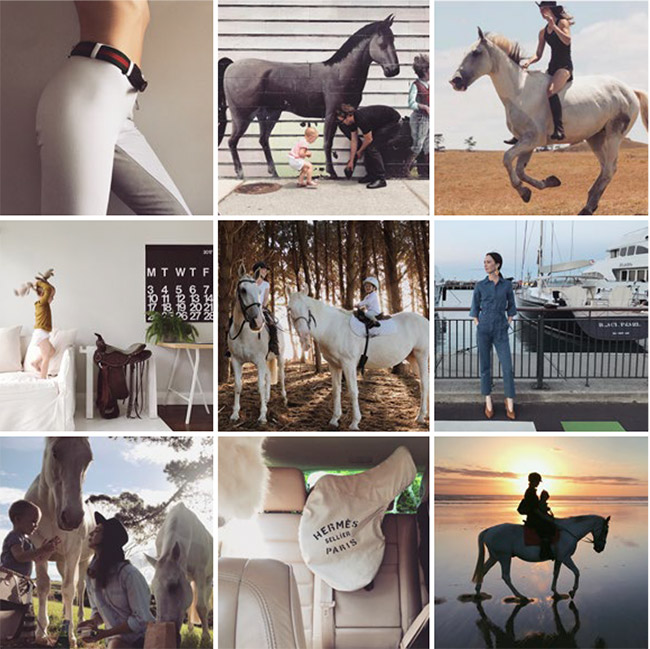Social Media x Equestrian Culture
Two major events took place for me at the turn of this New Year. First, I succumbed to increasing my data plan after several months of overages and arguing with my husband regarding who consumed more data (turned out to be me). Secondly, I acquired new (and very chic) eyewear to assist in my eye fatigue, from, as embarrassing as this sounds, staring at my phone too often.
In the words of Gaga, “I confess, I am lost, in the age of the social.” I find it wildly entertaining, inspiring, and informative, and I have a strong appreciation for the social types that offer an artistic eye, original content and loads of decorum. Equestrian culture is no stranger to this data-consuming universe, and the hordes of popular culture folk are no stranger to loving the equestrian aesthetic. Why is this? Is it the properties, the locations, the sport, the travel, the attire, the tack, the lifestyle? Is it the horses, the greys, blacks, chestnuts, and bays, in all shapes and sizes? The movement of them, the athleticism, the elegance? Or is it a known fact that regardless of your discipline, skill set, training and backing, it is the love of the animal and the sport that binds us all? It’s everything. And it’s intoxicating.

Virginia Varinelli, The Fashion Blogger | IG: @virginiavarinelli
So whether you make a living in the horse business, own a horse or just dress like you do, there is a wide, wonderful, social world of equestrianism just waiting for your prying eyes and twitching fingers. A platform at your disposal that is primed and ready for you to offer the world original, artistic and witty content on the things you love so dearly, horse included. Some of these you may know, some may be new to you. Instagram, Snapchat, Twitter, and beyond – here’s how to navigate the best of it all, learn a little along the way and get involved in The Age of the Equestrian Social.

Eloise Stevenson, The Lifestyle Gal | IG: @artisanbaby.nz
The Business of Social Media
The revolution has begun. Well, truthfully, it began quite some time ago. Businesses have evolved over the last decade and have transitioned from contemplating the importance of a social presence to fully immersing themselves in these marketing Goliath-like tools. And the equine industry has followed course. Horse & Style Magazine sat down with brand marketing consultant/entrepreneur/hunter circuit regular Kristin Thornton of Street to Stable® to discuss the importance of the social world in the marketplace. So where does a business begin, be it an equestrian clothing brand, a tack store, a show barn, a photographer? And what is the best social platform to consider? “Each client needs to look at their ideal demographic, specifically age, to best connect with their preferred followers,” says Thornton. Kristin goes on to say that a business can have great success in utilizing filters, graphics, and a tone of voice that resonates with their target group, regardless of the platform.

Julie Ferris, The Artist | @julieferris_equine_artist
Consistency, consistency, consistency… Whatever social media platform you choose to be a part of, make sure to post content on a consistent basis. “Two of the biggest components to building a successful social media presence are consistency and communication. Exposure is key for getting sponsors or, if you are a sponsored rider, it is imperative to mention sponsors consistently within your posts. The use of video, images, tags, and shared posts is a great way to let your followers know why you love the brands and products that sponsor you,” says equestrian social media consultant Jenna Rae Dana of the California-based firm J. Mac & Co.

Osborne Studio Gallery, The Art Gallery | @osbornestudiogallery
“Lastly, utilize the ‘insight’ tools to review your page analytics. These tools can tell you which of your posts have spoken to your audience, when your fans/followers are online, and detailed data on your audience (i.e. location, age, gender, etc.). This information can help you tailor content to match your targeted audience more efficiently,” says Dana.
Read the rest of this article in our May/June issue at issuu.com.


Leave A Comment